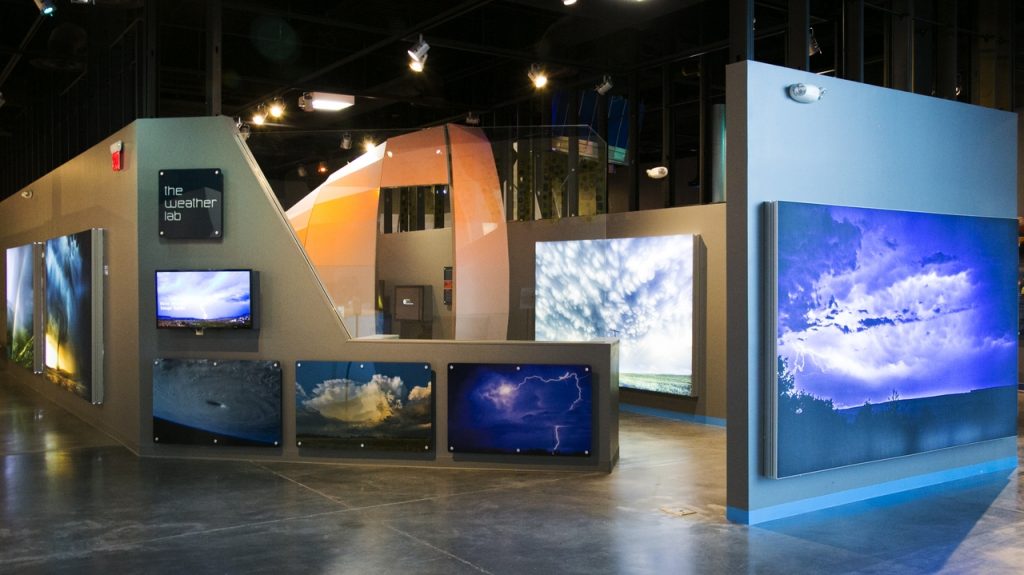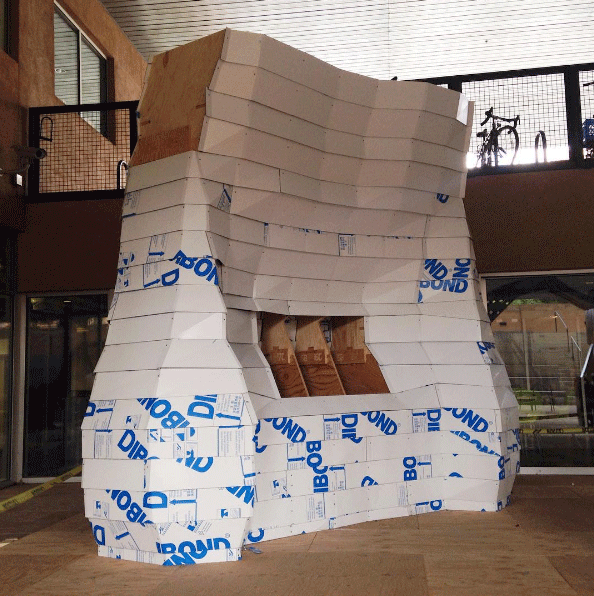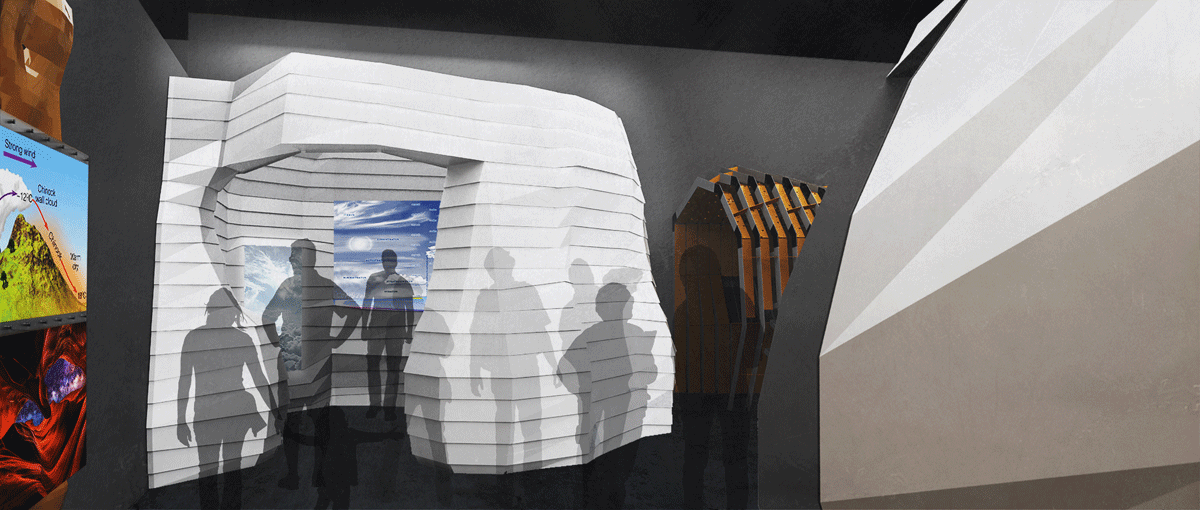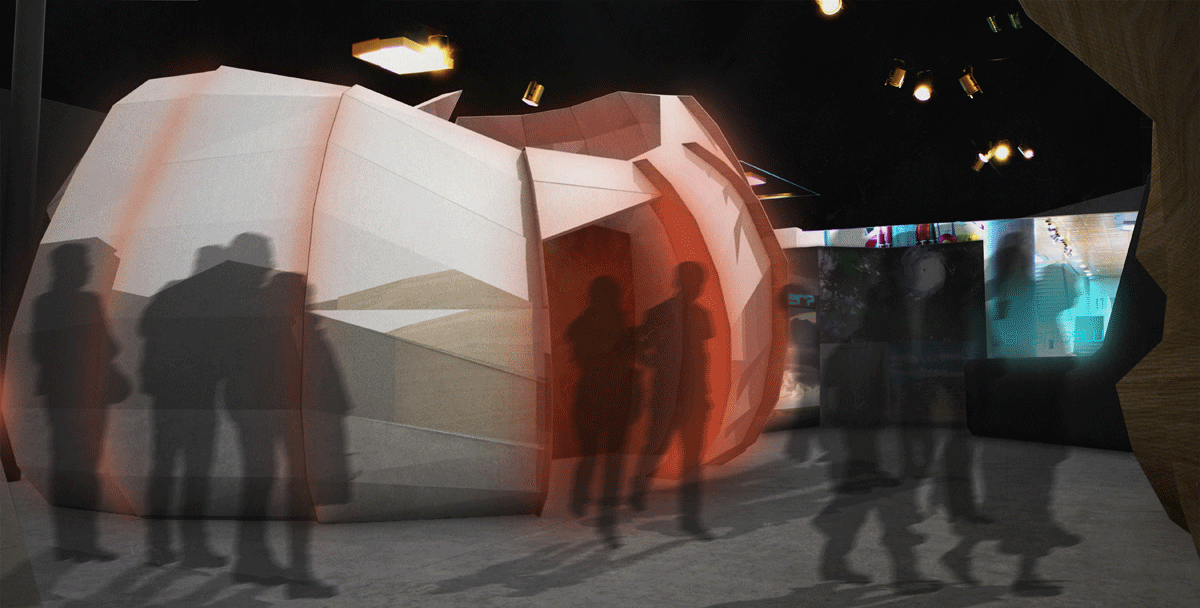
 A team of students from the University of New Mexico School of Architecture and Planning (SA&P) were tasked with providing an innovative solution to a contemporary architectural challenge. They have been presented with a design problem that is focused on weather and its impact on lighter than air flight; a common New Mexico issue. The project is for a 2,000 square foot permanent exhibit in the Anderson Abruzzo Albuquerque International Balloon Museum.
A team of students from the University of New Mexico School of Architecture and Planning (SA&P) were tasked with providing an innovative solution to a contemporary architectural challenge. They have been presented with a design problem that is focused on weather and its impact on lighter than air flight; a common New Mexico issue. The project is for a 2,000 square foot permanent exhibit in the Anderson Abruzzo Albuquerque International Balloon Museum.
The three students involved in the project aimed to engage both children and adults. They designed individual micro-environments where museum guests were invited to experience weather elements within the exhibition. The “Weather Lab” consists of four micro-environment called pods were created to include: Sun Pod, Wind Pod, Cloud Pod, and Precipitation Pod. The pods together represent an interconnected relationship from the emitting of molecules from the sun, to their movement in the air as wind, evaporation into vapor as clouds, to the vapor descending from the clouds to create precipitation. Additionally, the pods are designed with static information displays, while the Cloud Pod features an interactive touch screen displaying cloud movies.

The students chose Dibond for two of the pods – the Sun and the Cloud. After rejecting another material for being too fragile and inflexible, the team decided on a more durable and cleaner Dibond aluminum composite panel. Dibond also allowed the students to bend the material without the aluminum showing tearing. In order to create curved surfaces with rich textures to emulate weather, the team used 3D design and engineering software programs to include: Autodesk Maya and Rhinoceros3D + Grasshopper3D. The Cloud Pod used 55 sheets of Dibond and the Dibond material used for the Sun Pod amounted to 70 sheets for a total of 4,000 square feet of aluminum composite material within the exhibit. Each installation is between 9 feet and 14 feet tall and about 17 feet wide. The team is seeking recognition as the first Science, Technology, Engineering, and Mathematics (STEM) certified exhibition in the state of New Mexico.

In the School of Architecture at the University of New Mexico, many students are first introduced to Dibond as an innovative material solution. Damien Williams, who worked on the weather exhibit, credits ex Director of CRAF+T with introducing the material to him. After extensively working with Dibond, Williams exclaims, “It is a product we would definitely use again whenever it is applicable. It is incredibly easy to use.”
The pods made their official debut at the Anderson Abruzzo International Balloon Museum last Fall.

